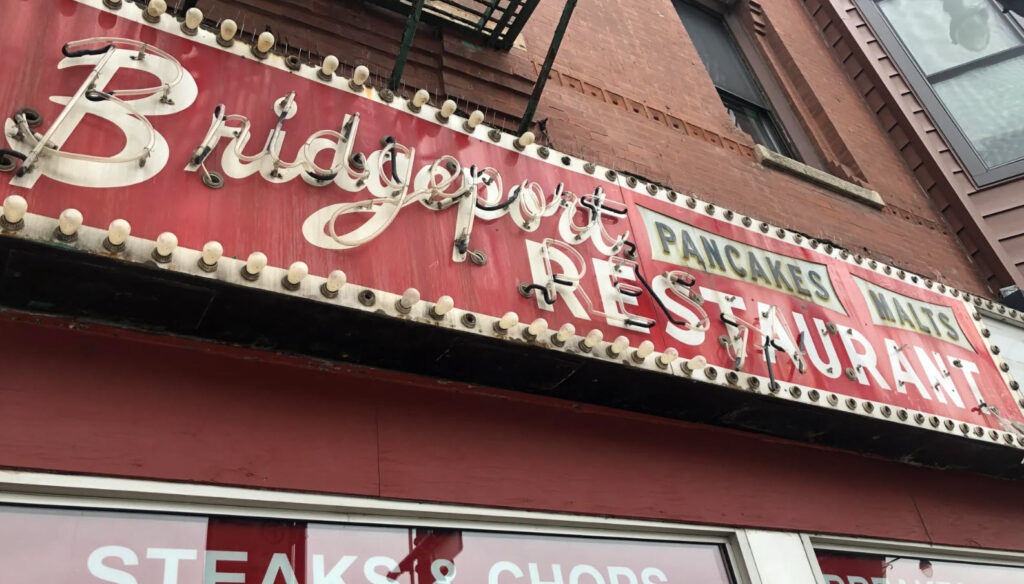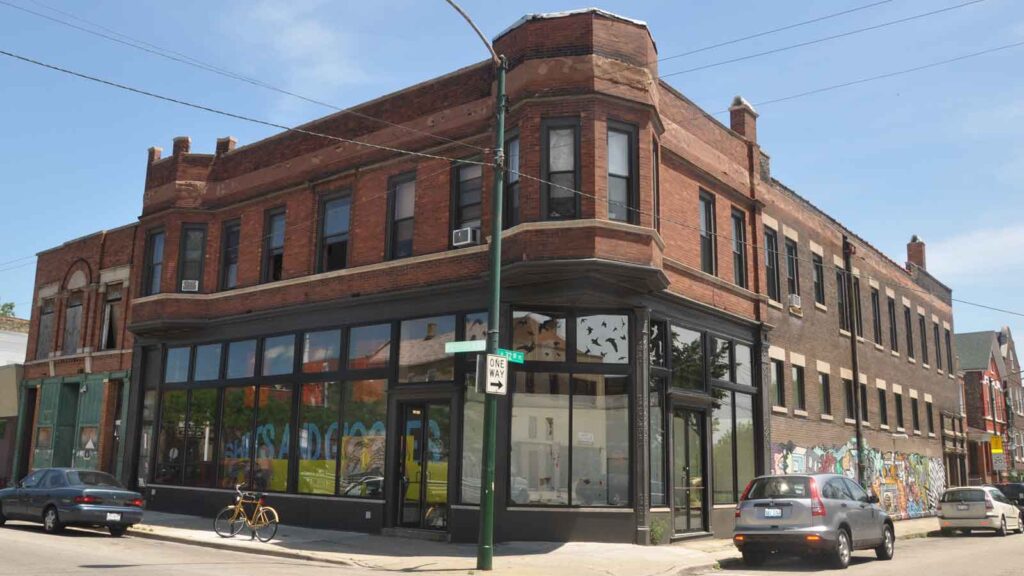
Situated on the South Side of Chicago, Bridgeport is included among the 77 “official” Chicago neighborhoods. It is bordered on the north by the South Branch of the Chicago River, to the west by Bubbly Creek, to the south by Pershing Road, and to the east by the Union Pacific railroad tracks. Close neighbors of Bridgeport are Pilsen to the north, McKinley Park to the west, Canaryville to the south, and Armour Square to the east. This area has been the residence of five mayors of the city of Chicago. In the past, Bridgeport had a reputation for racial discrimination, but now it is one of the city’s most diverse neighborhoods.
In the beginning, Bridgeport was known as the “Portage de Checagou” (or Portage des Chenes). In 1673, Fr. Jacques Marquette and Louis Joliet went through this area. Although it was technically still under French control until 1763, the British were using it, either from Detroit or Canada, up until 1783 or 1795.
Charles Lee or Leigh, a settler from Virginia, arrived and lived near the south fork of the Chicago River by 1804, but quickly moved closer to Lake Michigan after the completion of Fort Dearborn. In April 1812, two of his tenants sought refuge at the fort when a hostile Winnebago tribe killed others at a trading post. The Leigh farm stayed deserted as the Fort Dearborn massacre unfolded by summer’s end and remained so until the U.S. Army reconstructed the fort in 1816. A Detroit firm then backed trader John Crafts, who rebuilt the trading post and dubbed it “Hardscrabble”. As the Blackhawk War began, the trading post had grown to comprise several cabins and a dormitory. Other well-known people who lived there were metis trader Alexander Robinson, schoolteacher Russell E. Heacock (the only dissenter of the plan to form the Town of Chicago, which was incorporated on August 12, 1833), and Jean Baptiste Beaubien (the second non-indigenous Chicago resident, an advocate for incorporation, and the town’s first militia leader, who stayed there from 1840-1858).

Heacock became an advocate for the planned Illinois and Michigan Canal and this led to growth in the area during the 1830s, even though other people had already seen the potential of a canal to replace the portage. A limestone quarry was set up in 1832 or 1833 and this provided stone to better the Chicago harbor. In 1836, the area was renamed Bridgeport, the first Chicago neighborhood. In the same decade, a high number of immigrants from Ireland began arriving in the working-class neighborhood, turning it into an Irish-American enclave. The immigrants, who had been involved in the construction of the Erie Canal, came to work on the Illinois and Michigan Canal. Since money was lacking, the State of Illinois gave them “Land Scrip” as payment. A large portion of the Irish-Americans who received the scrip used it to buy land close to where the north end of the Canal meets the south branch of the Chicago River. The initial Bridgeport village, called “Hardscrabble”, was located close to the current section of Throop Street north of 31st Street.

Bridgeport is well-known for its proximity to a bridge on the Chicago River, which was too low for boats to pass through, necessitating cargo to be unloaded there. Finley Peter Dunne wrote about this area in his sketches at the start of the 20th century, where his character Mr. Dooley resided on “Archey Road” (present day Archer Avenue). Bridgeport has long been home to Irish immigrants, but also several other ethnic groups like Italian-Americans, Lithuanian-Americans, Mexican-Americans, and Chinese-Americans. These more recent immigrants found cheap housing there and the location was convenient for their work.

Visibly representing Bridgeport’s Polish history are two churches in the Polish Cathedral style, St. Mary of Perpetual Help and St. Barbara. The Art Institute of Chicago did the work to restore the paintings in the Shrine Altars at St. Mary of Perpetual Help which are from 1890, and there are plans to restore the stained glass windows, finish painting the interior ceilings, and complete the rotunda. In addition, the Chinese influence in Bridgeport is echoed in other ethnic groups who have established places of worship in their neighborhoods; the Ling Shen Ching Tze Buddhist Temple on West 31st Street was set up in 1992.

